Critical Report: Opening the Black Box of India's Foreign Policy
VerifiedAdded on 2022/09/22
|11
|818
|29
Report
AI Summary
This report offers a critical analysis of the article 'Opening the black box – The making of India’s foreign policy' by Nicolas Blarel and Avinash Paliwal, focusing on the process of India's foreign policy formation. The report begins with an overview of the article, its key arguments, and the methodologies employed, including the authors' analysis of PM Narendra Modi's Shangri La speech. It delves into the article's main arguments concerning India's foreign policy towards its neighbors, the US, and Russia. The analysis highlights the article's structure, including its subsections, and its strengths, such as its thorough research and engaging presentation. Furthermore, the report identifies the limitations of existing research in the field and emphasizes the importance of further studies, particularly in the context of strengthening India's foreign policy. The report concludes by acknowledging the article's contribution to the special issue of India Review, while also acknowledging its shortcomings, and its potential to aid future research on the subject of India's Foreign Policy.
1 out of 11
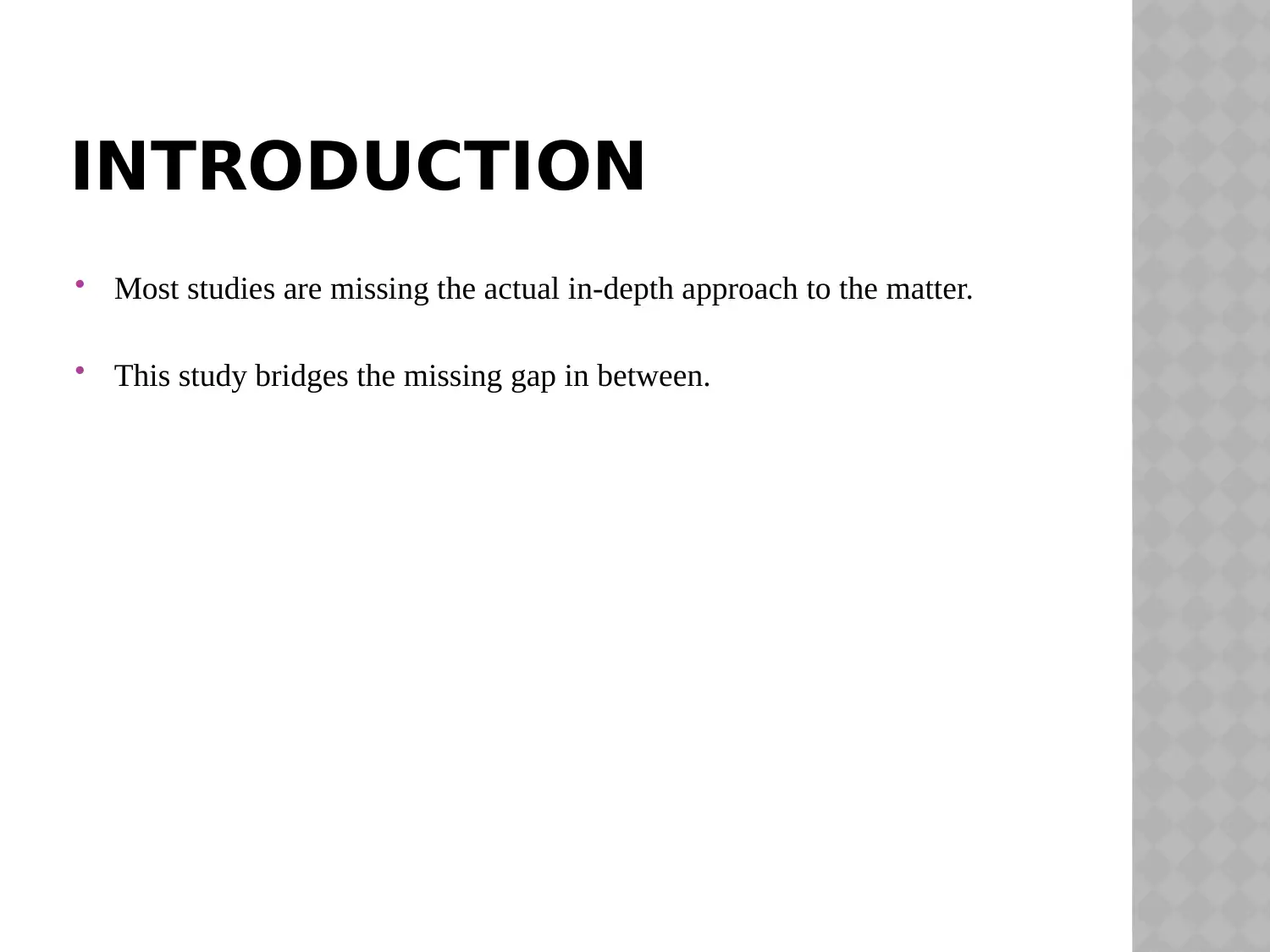
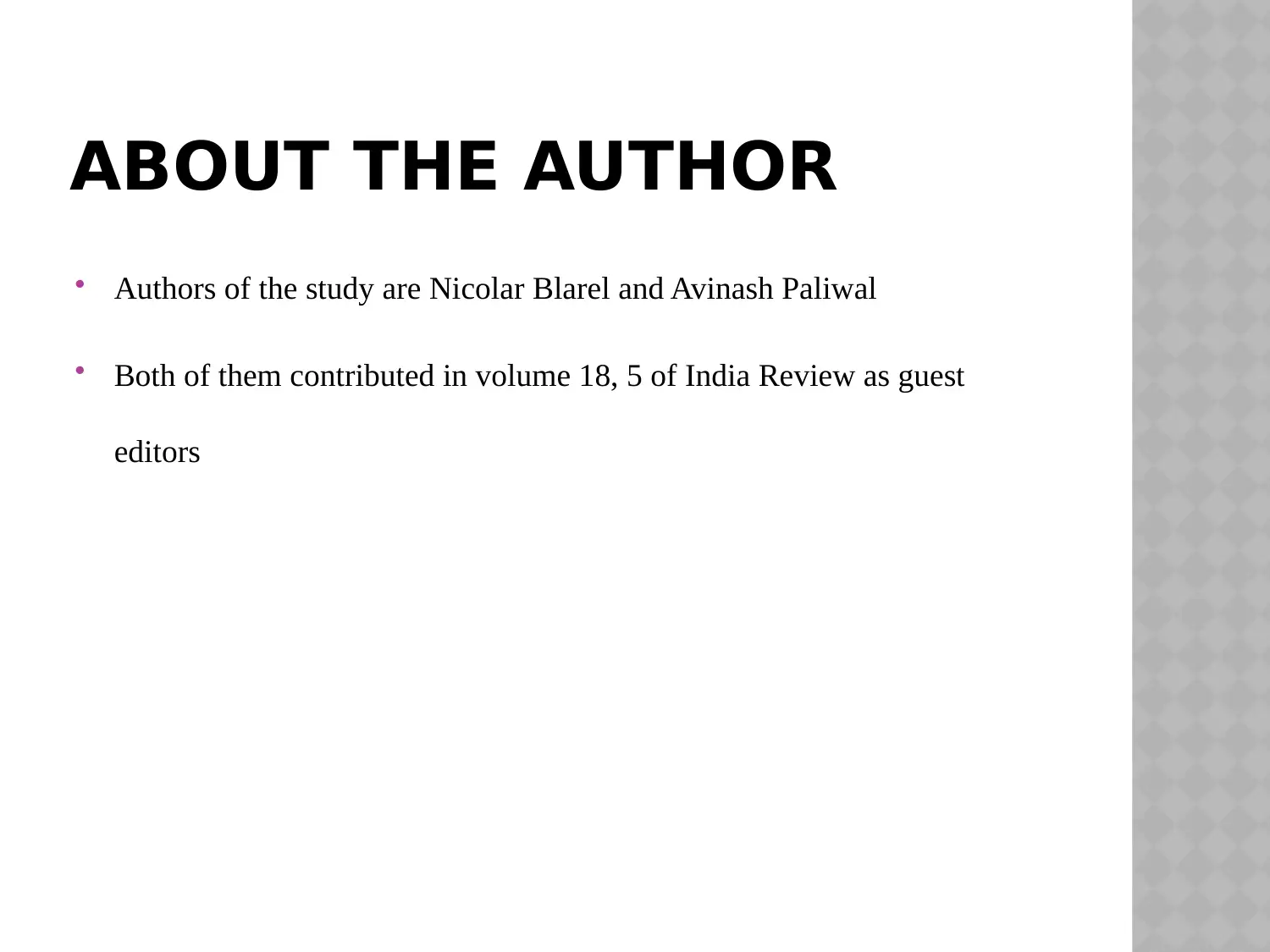
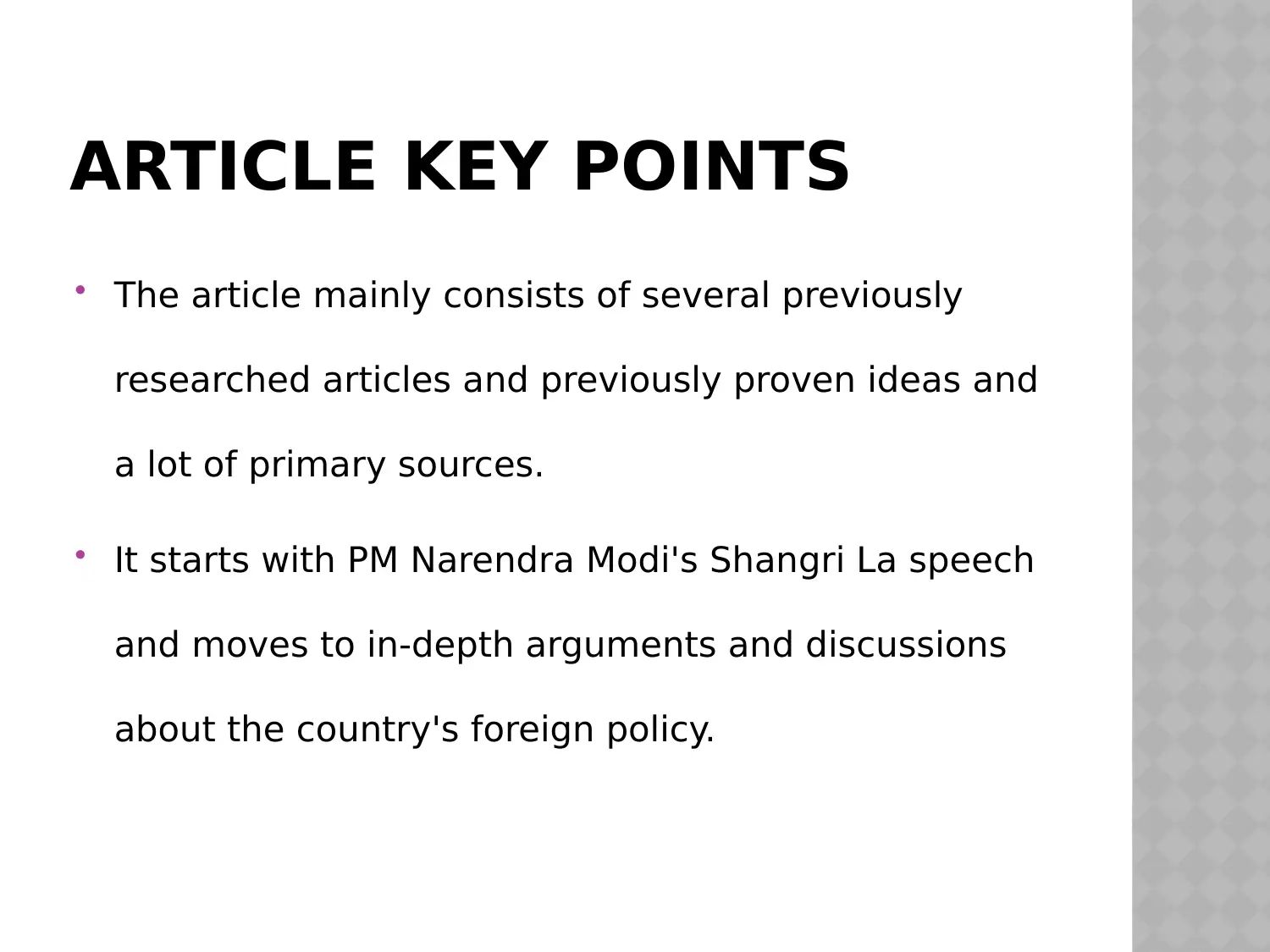

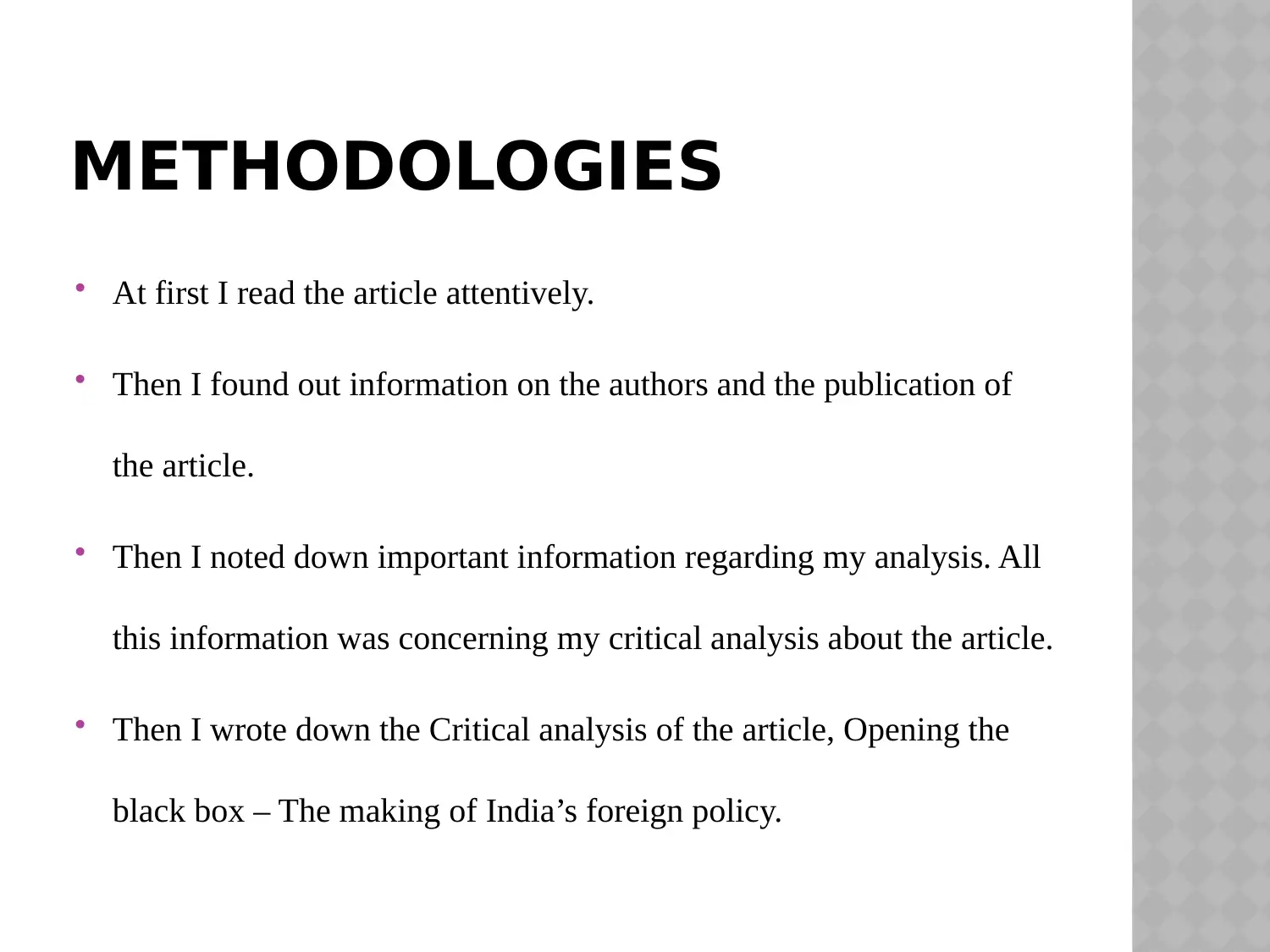
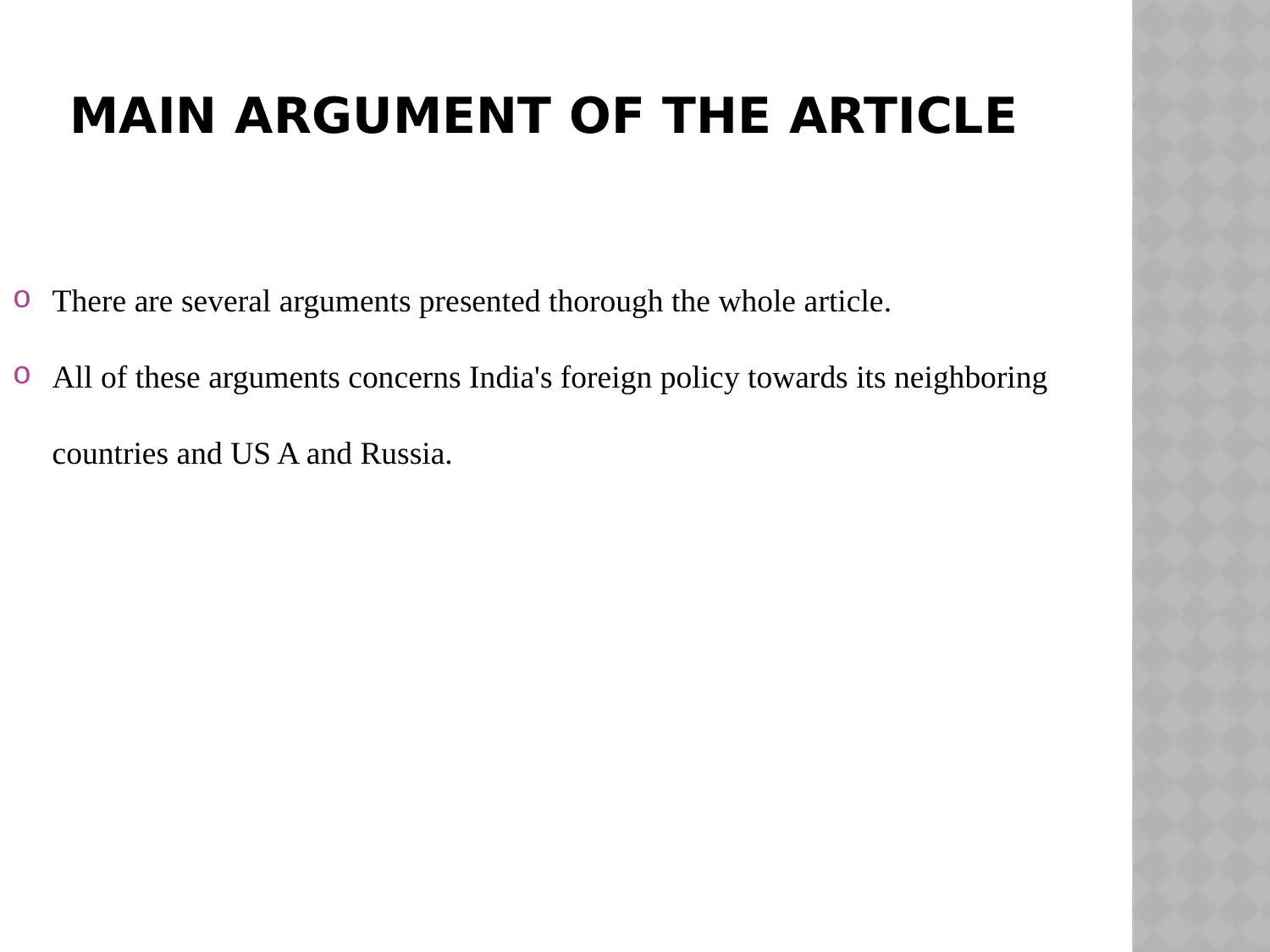
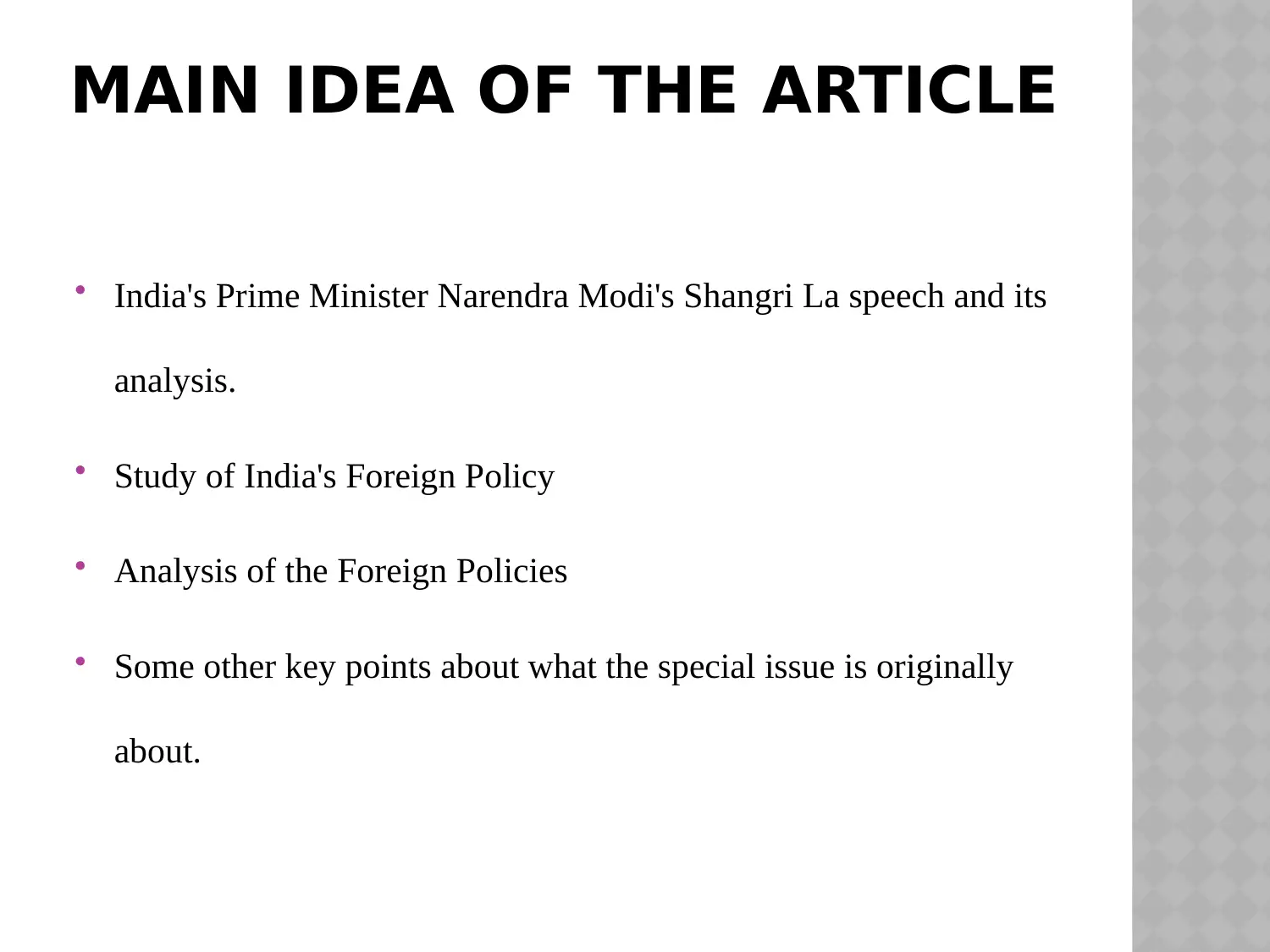
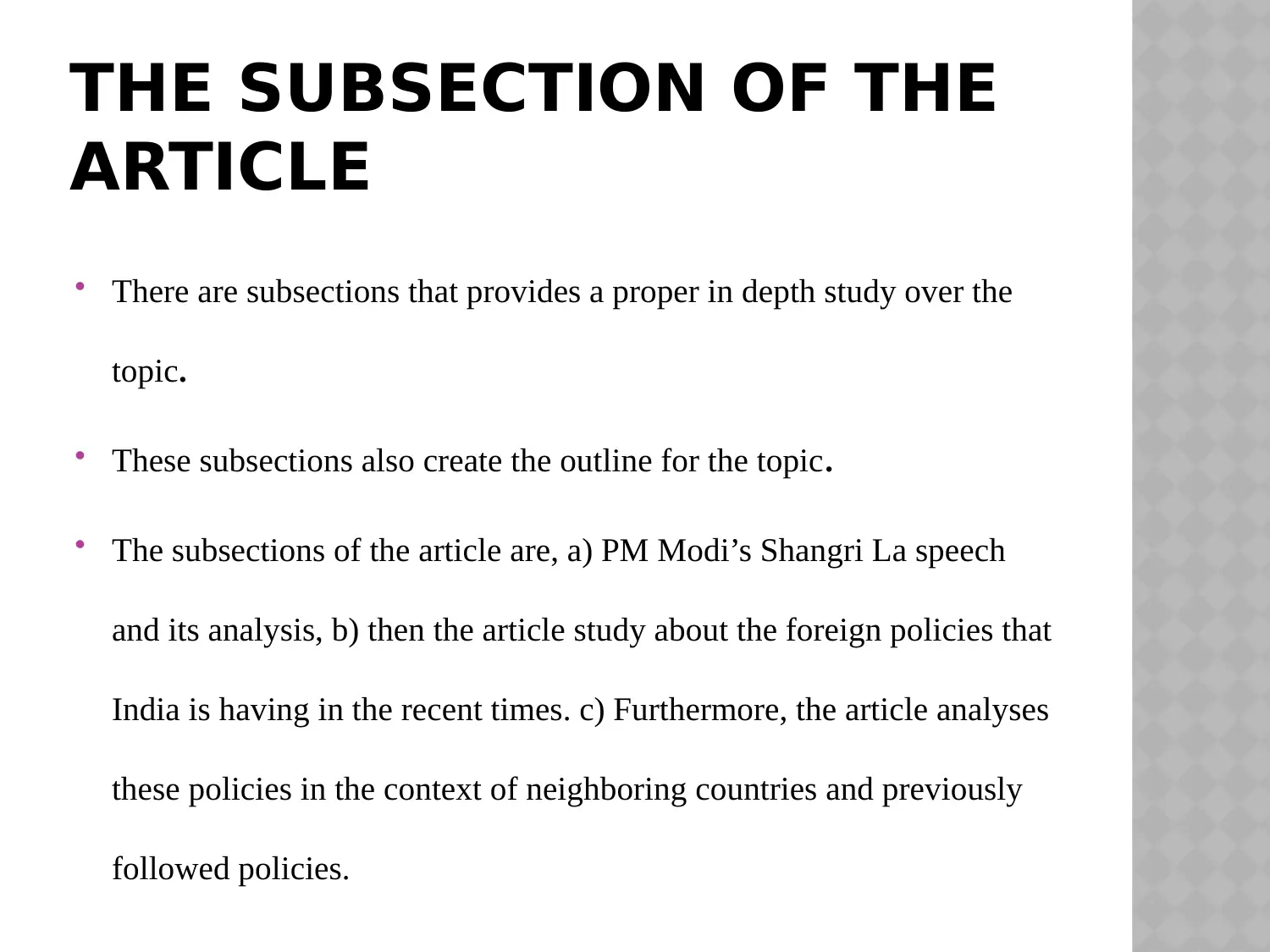
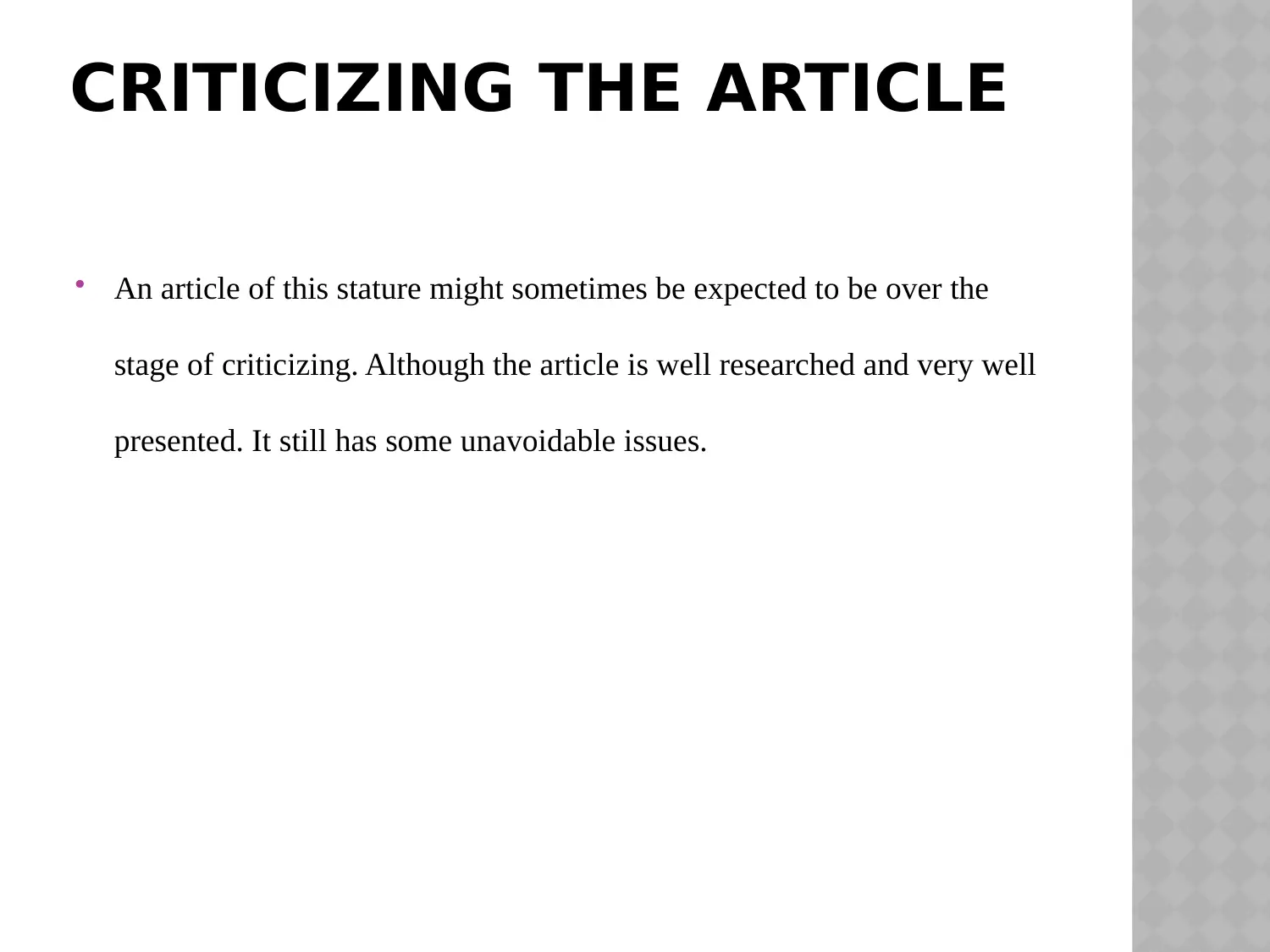
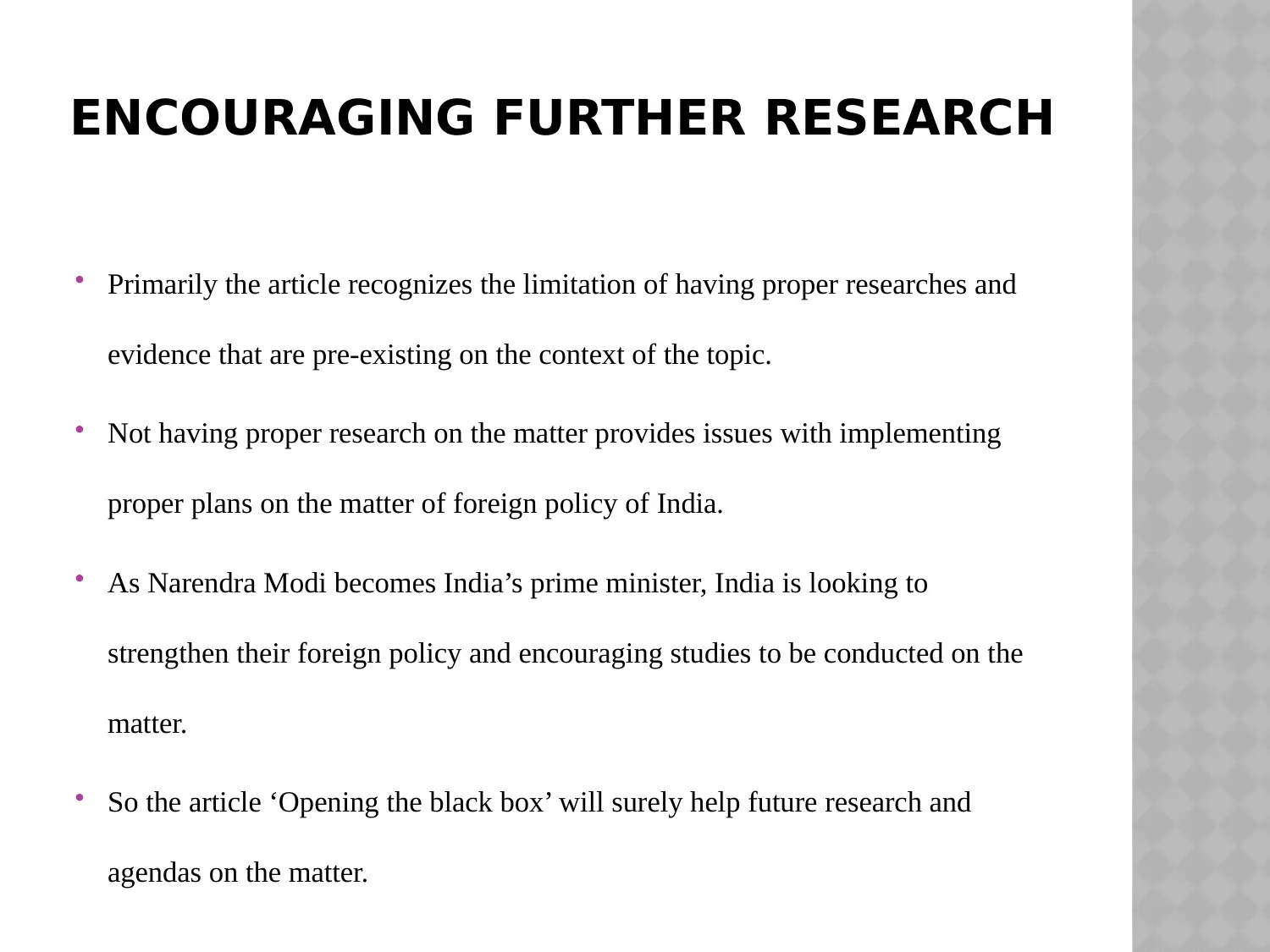
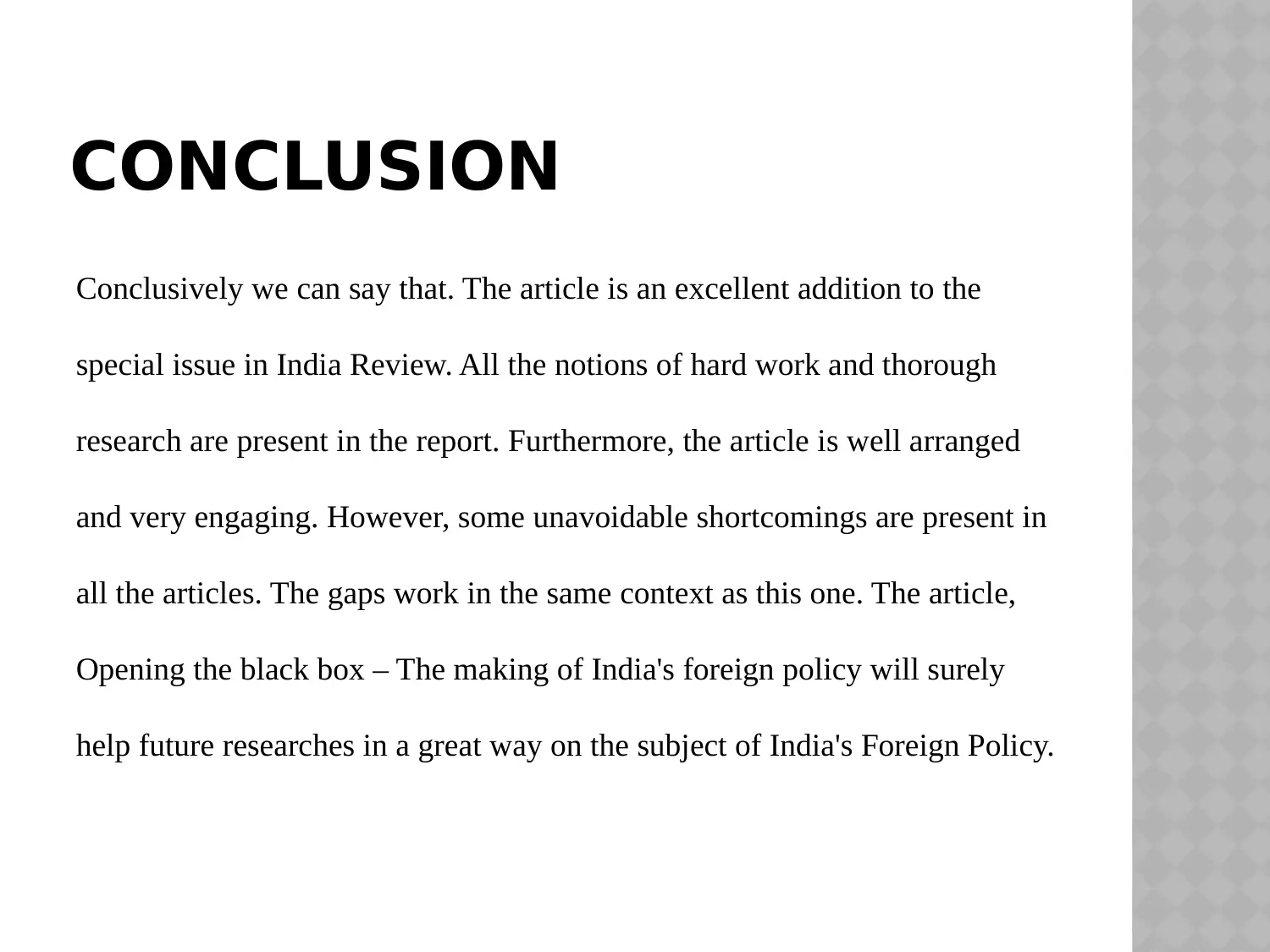
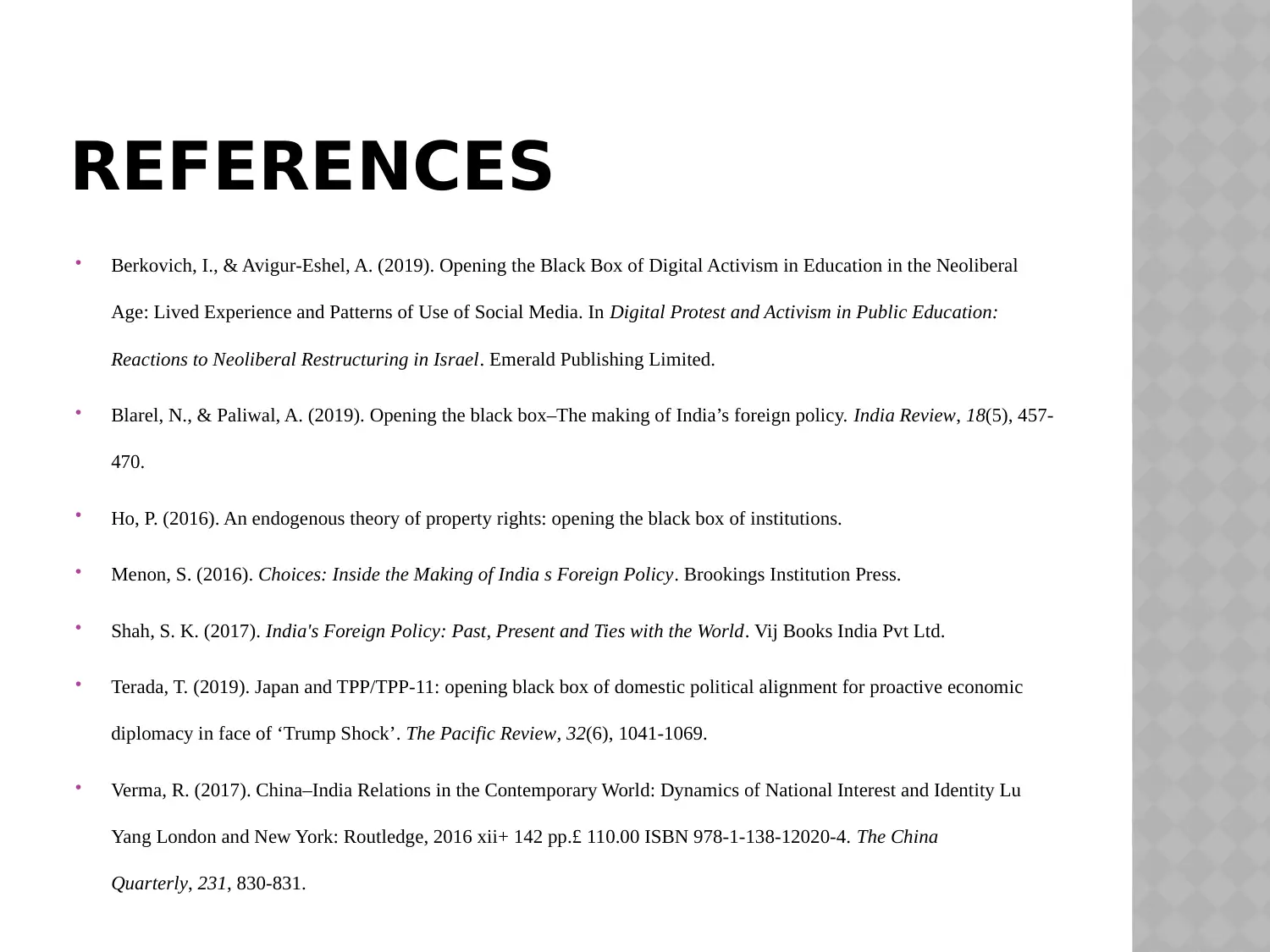

![[object Object]](/_next/static/media/star-bottom.7253800d.svg)